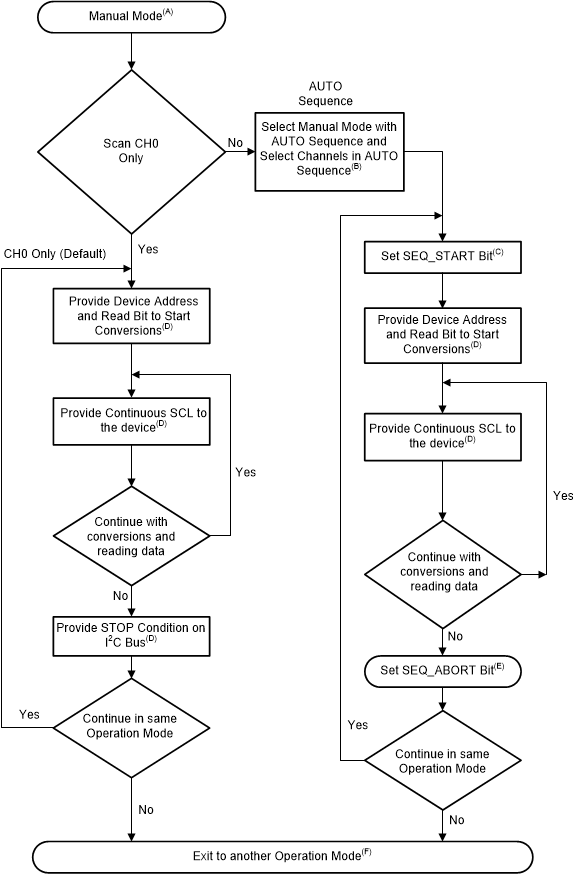SBAS891B November 2017 – September 2022 ADS7142-Q1
PRODUCTION DATA
- 1 Features
- 2 Applications
- 3 Description
- 4 Revision History
- 5 Pin Configuration and Functions
-
6 Specifications
- 6.1 Absolute Maximum Ratings
- 6.2 ESD Ratings
- 6.3 Recommended Operating Conditions
- 6.4 Thermal Information
- 6.5 Electrical Characteristics: All Modes
- 6.6 Electrical Characteristics: Manual Mode
- 6.7 Electrical Characteristics: Autonomous Modes
- 6.8 Electrical Characteristics: High Precision Mode
- 6.9 Timing Requirements
- 6.10 Switching Characteristics
- 6.11 Timing Diagrams
- 6.12 Typical Characteristics: All Modes
- 6.13 Typical Characteristics: Manual Mode
- 6.14 Typical Characteristics: Autonomous Modes
- 6.15 Typical Characteristics: High-Precision Mode
-
7 Detailed Description
- 7.1 Overview
- 7.2 Functional Block Diagram
- 7.3 Feature Description
- 7.4 Device Functional Modes
- 7.5 Programming
- 7.6 Register Map
- 8 Application and Implementation
- 9 Device and Documentation Support
- 10Mechanical, Packaging, and Orderable Information
Package Options
Mechanical Data (Package|Pins)
- DQC|10
Thermal pad, mechanical data (Package|Pins)
- DQC|10
Orderable Information
7.4.2.2 Manual Mode With AUTO Sequence
Set the OPMODE_SEL register to 100b or 101b for manual mode with AUTO sequence. The host must set the SEQ_START bit in the START_SEQUENCE register and provide the device address and read bit to start the conversions. To continue with conversions and reading data, the host must provide continuous SCL (Figure 7-13). In this mode, the SEQ_ABORT bit in the ABORT_SEQUENCE register must be set to abort the operation. Then the device operation mode can be changed to another operation mode. In this mode, a register read aborts the AUTO sequence.
In manual mode, the device always uses the high-speed oscillator and the nCLK parameter has no effect. The maximum scan rate is given by Equation 7:

- fs = Maximum sampling speed in kSPS
- TSCL= Time period of SCL clock (in µs)
- if TSCL-LOW (low period of SCL) < 1.8.µs, k = (1.8 – TSCL-LOW) and the device stretches clock in manual mode; not applicable for standard I2C mode (100 kHz)
- if TSCL-LOW (low period of SCL) ≥ 1.8.µs, k = 0, and the device does not stretch clock in manual mode

Data can be read from the device by providing a device address and read bit followed by continuous SCL, as shown in Figure 7-13.
